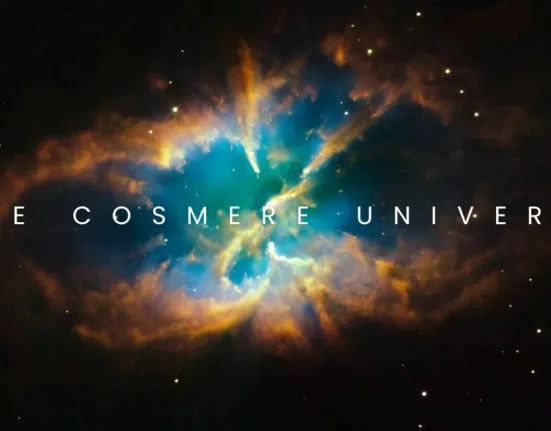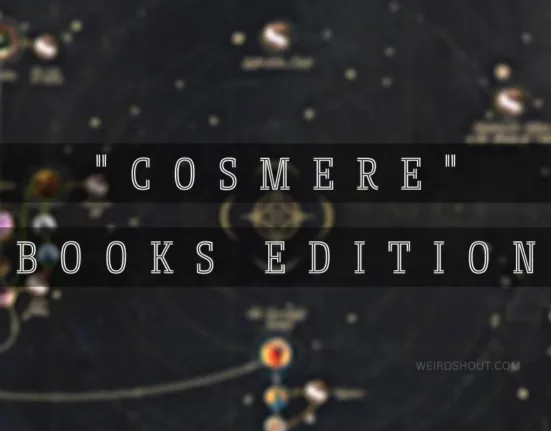Brandon Sanderson, the renowned wordsmith known for his swift penmanship, effortlessly shattered Pebble’s Kickstarter record for the highest-funded project.
In a mere three days, Sanderson’s ambitious endeavor to self-publish four undisclosed novels surpassed the $20.3 million raised by the Pebble Time smartwatch in 2015. Fueled by his passionate fanbase, Brandon Sanderson Books Kickstarter soared to a staggering $41,754,153 after a month-long funding period.
Brandon Sanderson Books Kickstarter
Sanderson had planned to put out all four of his books in 2023. Three of them take place in his Cosmere universe. But guess what? Instead, he revealed another, bringing the total to five books. Fascinating, is not it?
Brandon Sanderson Books Kickstarter remarked on the campaign site for his own publishing firm, Dragonsteel Entertainment, that “These books are an excellent place to start into my work, as they are each standalone novels that require very little previous knowledge of anything I’ve written before.”
The amount of pledges is more than quadruple the previous record, making the campaign the largest project in Kickstarter’s history. Also, it achieved records for the most money collected in the first 24 hours ($15,4 million) and the most financing and supporters for the same time period.
RELATED – Best Brandon Sanderson Books in Order to Read: A Must-Have List for Fantasy Fans
So… Do you want to know more about this Kickstarter? If I explain it from Brandon Sanderson Books Kickstarter’s vantage point, you’ll find it much simpler to grasp. Let’s dive right in.
What Does Kickstarter Do and Who Uses It?
Kickstarter is a platform that allows users to spark innovative ideas by backing them with financial pledges.
Creative innovators seeking financial support can find refuge on Kickstarter, a crowdfunding platform that assists in getting imaginative projects off the ground. This exciting initiative is entirely community-driven, with donations from the public fueling the creation of dynamic new ideas.
Although nonprofits are eligible to launch a Kickstarter campaign, charitable projects are prohibited from using the platform to generate funds or make pledges to support a cause.
What Backers Do and Why?
Kickstarter is the embodiment of creativity, where creators and backers unite to bring incredible projects to life. Creators use text, photos, and videos to showcase their projects on a page they’ve set up, complete with a funding goal and a deadline, and offer rewards that increase in value the more backers pledge.
While the creator’s imagination knows no bounds, their ability to realize their vision is dependent on the generosity of enough backers. After the funding goal is reached, the project can proceed, but depending on the complexity of the project, backers may have to wait several months to see the finished product.
Launching a Project on Kickstarter?
Despite Kickstarter’s potential for publicity, not all projects get the green light. Before submitting their brainstorm, every creator must pore over the Kickstarter Project Guidelines. While 75% of proposals make the cut, the other 25% are often rejected for flouting the rules.
Yes, those are some of the general rules that Kickstarter requires of creators who launch projects on their platform. Here is a bit more information on each of those rules:
- Kickstarter is a platform for creative projects, and they want creators to share their creations with others. This can include products, experiences, art, music, films, and more.
- It requires creators to be transparent about their projects, including the risks and challenges involved. This means providing clear descriptions, images, and videos that accurately represent the project.
- While this platform is for funding creative projects, it is not a platform for charitable fundraising. Creators cannot use the platform to raise money for charitable organizations or causes.
- Kickstarter is not a platform for equity crowdfunding, which means that creators cannot offer ownership or equity in their projects in exchange for funding.
- Kickstarter has a list of prohibited items that creators cannot offer as rewards for backers, including contests, political fundraising, drugs, weapons, and more. Creators must also comply with all local laws and regulations in their jurisdiction.
In a world where technology often dominates the creative scene, Kickstarter offers a refreshing change. Here, you’ll find a vibrant community of creators spanning different fields, from filmmakers and musicians to artists, writers, and designers. It’s a hub of talent, where even explorers and curators can showcase their imaginative projects and ideas.
All-or-Nothing Rule of Kickstarter
Only upon reaching their funding goal within the deadline can a creator claim their funds; otherwise, the money remains untouched.
To mitigate the risk involved, Kickstarter implemented a rule that prohibits the exchange of money unless the funding goal is met within the set deadline. If a project fails to obtain the necessary funds, delivering to current backers becomes a challenge, and everyone is affected. Nonetheless, creators can always try again in the future.
Backers are given the chance to receive rewards for their support, according to Kickstarter’s regulations. The creators must provide some form of compensation, no matter how simple or intricate, those supporters can choose from when funding a project. Additionally, an option called ‘Back it because you believe in it’ is available for those who wish to contribute without receiving a reward.
While it’s crucial to create a production and shipping plan that caters to all your requirements, be cautious not to set the bar too high. Bear in mind that you’ll need finances to disburse the pledged incentives to your backers, factor in Amazon payment processing fees (up to 5%), and consider the 5% fee that Kickstarter charges for fully-funded projects.
Backers Rewards
Rewards for fundraising can be as simple as a mention on the project’s website or as elaborate as the creator including the backer’s name in the final product, inviting them to a party or performance, providing a copy or signed version of the finished product, providing t-shirts, or even setting up a meeting with a celebrity backer. Any sort of thing may happen.
Similarly, depending on how much money was pledged, supporters of Brandon Sanderson‘s projects will get e-books, audiobooks, or physical copies of his novels. Backers will get eight packages of goodies during the year 2023 as part of the campaign incentives.
After a project has reached its fundraising goal but before the rewards are sent, the creators may ask backers for more information. It may be necessary to get in touch with them to find out things like preferred t-shirt sizes, specifics for personalized prizes, or shipping information to facilitate the delivery of rewards. Sanderson is very active on his YouTube channel and all other social platforms to give updates about his work to his backers.
RELATED – Brandon Sanderson Series: Know Your Favorite Author
Backers may always check the Kickstarter page’s Expected Delivery Date section to see when they might expect to get their prizes. It may take a few months for the award to be delivered, depending on its intricacy. If the final product itself is the prize, for instance, fulfilling the reward may take some time. The secret is to be patient, but the payoff will be well worth it.
How to Browse Projects?
It’s simple to look at different projects. Browse the Kickstarter homepage for highlighted projects, trending picks, and new releases on Kickstarter with a simple swipe of your finger.
Use the search bar at the top of the page to find specific projects by title or keyword.
What’s it Like to Back a Project?
It just takes a few keystrokes to contribute to a project. To begin, click the green “Back this Project” button that appears on each project page.
After that, pick out a prize and decide how much you want to donate. Amazon’s secure payment processing system will handle the rest.
If the fundraising target is not met, your credit card won’t be charged until the project’s end date has passed. After a project’s end date, Kickstarter will contact all backers with an update email, no matter the result.
In the case of Brandon Sanderson Books Kickstarter, he and his crew have given to all literary projects on that campaign that aren’t too unsafe for work and don’t violate Kickstarter’s TOS in order to celebrate his accomplishment.
RELATED – Cosmere Universe (All You Need To Know)
They donated to over 300 different projects and promoted a few of them in a video in the hopes of attracting additional financial support and of course, he got what he needed from his backers.
Kickstarter vs. Indiegogo vs. Patreon
Indiegogo provides a flexible-funding choice that enables you to retain funds raised regardless of whether the original funding goal is met.
In contrast, Kickstarter follows a stricter model that necessitates the fulfillment of the goal before releasing any funds.
Nevertheless, it’s worth mentioning that Kickstarter boasts a wider audience and higher user traffic than Indiegogo.
If you’re an artist, musician, writer, or creative seeking a platform for crowdfunding, then Patreon is a fantastic alternative to Kickstarter, particularly if your category isn’t available on Kickstarter.





